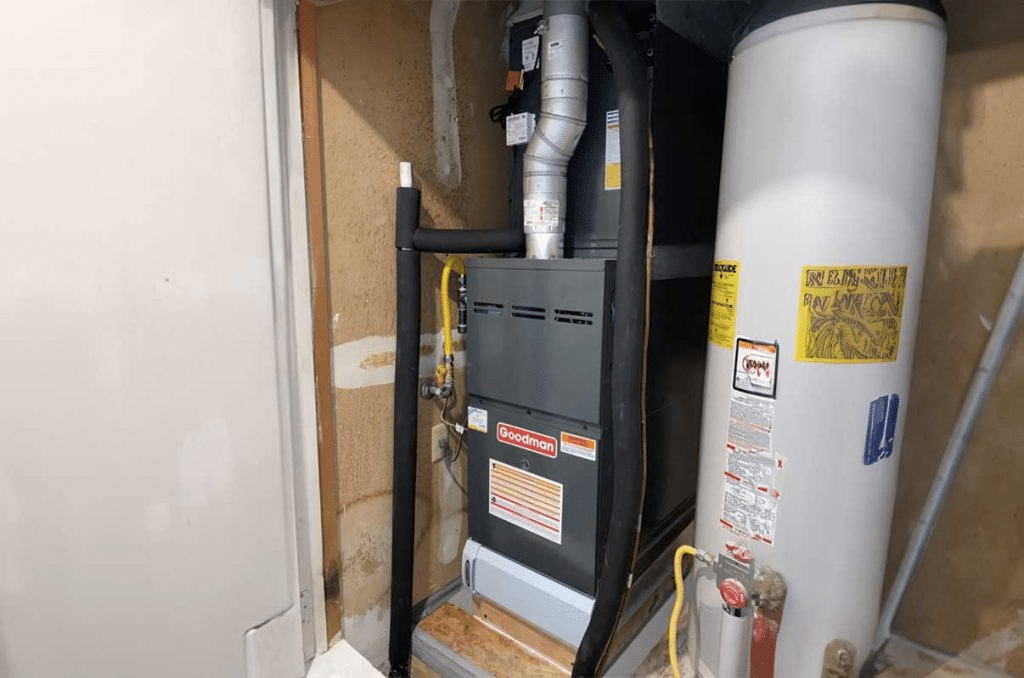When homeowners in San Antonio explore reliable heating, they often consult professionals specializing in Furnace Installation in San Antonio, TX. Understanding the expected lifespan of a furnace, combined with quality service and maintenance, helps guide budgeting, replacement decisions, and long-term comfort for households in the greater San Antonio area.
What is the expected lifespan for a furnace in San Antonio, TX?
When researching Furnace Installation & Maintenance San Antonio, TX, a common question among local homeowners is: “How many years can a furnace realistically last in this climate?” The answer varies based on usage, fuel type, maintenance history, and installation quality. In Texas, including San Antonio, furnaces tend to last 15 to 20 years in traditional gas-fired systems.
However, that range can shift. Manufacturers and HVAC experts often cite lifespans from 12 to 15 years for less-maintained systems, and 20 years or longer for well-installed, properly maintained units. For homeowners concerned with efficient performance and comfort throughout the typical life of their furnace, knowing the key influencing factors is essential when moving ahead with Furnace Installation & Maintenance in San Antonio, TX.
What factors determine how long a furnace lasts after Furnace Installation & Maintenance in San Antonio, TX?
Fuel type and system design
One of the primary influences on lifespan is whether the furnace is natural gas, propane, or electric. Gas furnaces involve combustion, which results in heat exchanger stress, venting requirements, and potential corrosion—all of which can accelerate aging. On the other hand, electric furnaces avoid combustion but may face other wear points. For instance, a gas furnace’s lifespan range of 15–20 years is common, whereas electric furnaces under ideal conditions may reach 20–30 years.
When considering Furnace Installation & Maintenance San Antonio, TX, homeowners should evaluate the interaction between fuel type, home insulation, ductwork system and local climate patterns to determine long-term durability.
Installation quality and system sizing
Correct installation is another major factor. An oversized or undersized furnace causes short-cycling or inefficient runtime, which increases stress on components. Homes in the San Antonio region with inadequate ductwork, poor airflow or improper thermostat setup may experience reduced system life. Industry commentary notes that “a poorly installed furnace can last 10 years while the same equipment competently installed and maintained is good for 40.”
During Furnace Installation & Maintenance San Antonio, TX, the service provider should perform a Manual J load calculation, inspect duct sizing, verify venting, calibrate controls and ensure airflow meets design standards. These steps contribute to extended operational life.
Maintenance and routine service
Routine upkeep is perhaps one of the strongest predictors of lifespan. Annual or bi-annual inspections, filter replacements, combustion checks, safety testing, and airflow verification all contribute meaningfully. A Texas-based blog states that up to 75% of winter service calls stem from a lack of maintenance.
When homeowners engage in professional care as part of their Furnace Installation & Maintenance San Antonio, TX strategy, they increase the chance that their system will reach or surpass the upper age range of service life. Maintenance also supports safety — particularly relevant when a furnace has been in continuous use for many years.
Usage patterns and efficiency
Even though San Antonio’s climate does not require extreme winter heating compared with colder states, many homes still rely on their furnace for part of the year—especially early spring and late fall—and sometimes as a backup during mild winters. Frequent use, long run times, high set-points, and systems that start old or inefficient can shorten lifespan.
Conversely, efficient operation—lower temperature settings, good insulation, zoned heating and clean ductwork—relieves stress on the furnace and extends life. Homes opting for high-efficiency units, smart thermostats, and regular inspections often achieve better outcomes during Furnace Installation & Maintenance in San Antonio, TX.
What signs indicate a furnace may be nearing the end of its usable life?
Homeowners participating in Furnace Installation & Maintenance in San Antonio, TX, should watch for several red flags. As one note suggests, if a furnace is older than 15–20 years, or if energy bills rise without changes in usage, it may be time to explore replacement.
Signs include: uneven heating across rooms; strange noises such as banging, rattling, or whistling; frequent cycling on and off; visible rust or corrosion; difficulties maintaining thermostat set-points; and increased repair costs in comparison to expected savings. These symptoms often relate to age, component stress, or inefficiency.
When a house is part of a Furnace Installation & Maintenance San Antonio, TX plan, technicians will inspect for wear, perform combustion tests, evaluate heat exchanger integrity, verify venting, and offer recommendations when replacement becomes more cost-effective than continuing repairs.
How can homeowners maximize their furnace’s lifespan within the context of Furnace Installation & Maintenance San Antonio, TX?
Choose proper equipment and professional installation
The foundation of longevity begins with selecting the right furnace and having it installed by certified technicians. Ask about brand reliability, warranty status, AFUE (Annual Fuel Utilization Efficiency) ratings, and fuel source compatibility. During Furnace Installation & Maintenance, San Antonio, TX, the installer should provide documentation of sizing, airflow, duct layout, and system test results.
Maintain an annual service schedule
Scheduling a professional tune-up each year—ideally before heavy heating demand begins—ensures filters, burners, coils, connectors, controls, and venting are all checked. As one Texas firm noted, annual service helps prevent breakdowns and preserves warranty coverage.
Filters should be replaced regularly (approximately every 1–3 months, depending on conditions). Duct inspections and cleaning, blower motor lubrication (if required), verification of pilot or ignitor operation (in gas furnaces), and safety checks—including carbon-monoxide detectors—are all elements of maintaining systems that last.
Optimize home envelope and reduce system stress
Improving insulation, sealing air leaks, ensuring proper duct insulation, zoning where appropriate, and installing a smart thermostat all reduce the burden on the furnace. When the heating system does less work to maintain comfort, the wear on components decreases, which extends lifespan. Some homeowner guides recommend evaluating duct sealing and insulation together with HVAC service for best results.
Monitor usage and respond to warnings
Keep track of how the system is performing. Suppose energy bills are climbing while occupancy remains constant. In that case, comfort is uneven, or the system is cycling frequently, schedule a diagnostic visit as part of your Furnace Installation & Maintenance San Antonio, TX strategy. Early intervention often helps avoid forced replacements.
Frequently Asked Questions
Q1: How many years should I expect from a furnace in San Antonio before replacement?
With quality installation and maintenance, many furnaces in the San Antonio region last between 15 and 20 years. Some units, particularly those well-maintained, may last longer than 20 years.
Q2: Does a higher quality or higher AFUE furnace last significantly longer?
Yes, generally. A furnace with a higher AFUE rating, trusted brand components and installed by certified professionals under a maintenance plan tends to have fewer failures and better longevity. Installation and system match are critical.
Q3: What maintenance steps help extend furnace life as part of Furnace Installation & Maintenance, San Antonio, TX?
Annual professional inspection, regular filter changes, duct leakage control, thermostat optimization, and home insulation improvements all contribute. Consistent service helps identify wear before it becomes a failure.
Q4: When should I plan for the replacement of my furnace rather than keep repairing it?
If your system is more than 15–20 years old, requires frequent repairs, has uneven heating, rising bills, and reduced efficiency, then planning replacement may be cost-effective. Many homeowner resources suggest starting replacement planning around the 10-year mark.
Q5: How will replacement cost vary when considering Furnace Installation & Maintenance in San Antonio, TX?
Replacement cost depends on furnace capacity, fuel type (gas, propane, electric), efficiency rating, ductwork condition, and local labor rates. Budgeting for upfront cost plus expected performance gains helps align decisions. Typical replacement cases can range from thousands of dollars, depending on these variables.
Conclusion
For homeowners looking into Furnace Installation & Maintenance in San Antonio, TX, recognizing that proper installation, periodic service, and usage optimization are keys to longevity is paramount. A well-maintained furnace that was installed correctly can reach or even exceed the 15-20 year range commonly quoted in Texas.
With proactive service, diligent filter and duct upkeep, and system matching to home requirements, longevity improves and unplanned replacements diminish. When looking for a trusted partner to handle every aspect of furnace installation, maintenance, diagnostics, and long-term comfort in San Antonio and surrounding communities, the name to remember is Apollo Air Heating & Cooling—committed to excellence from system choice through decades of reliable performance.

